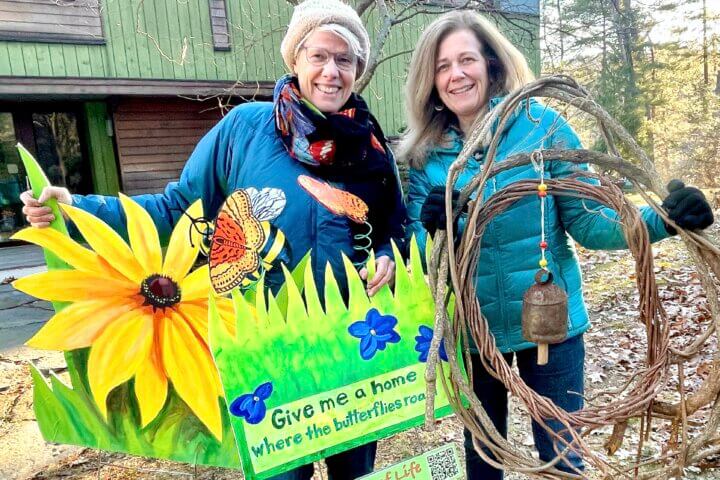Hosting the first of two public meetings to provide information and gather feedback on the future health of Warner’s Pond, Concord’s Department of Natural Resources met in Monument Hall and over Zoom recently.
Delia Kaye, director of Natural Resources, encourages community input by answering a survey, available on the town website, or in hard copy form at 141 Keyes Rd. The meeting presentation can also be accessed on the website and as a YouTube recording available on the Minuteman Media Network.
The presentation was conducted by Alex Patterson, a project manager and ecologist at E.A. Engineering, Science and Technology, Inc. The Natural Resources Department partnered with E.A. to complete an analysis of possible alternatives for the long-term health and management of the pond.
Three alternatives emerged to manage the pond’s advanced state of eutrophication, and how this excessive richness of nutrients – noticeable since the 1980s – is perpetuating the density of invasive non-native plant species that are thriving, including. “fanwort, water chestnut and variable water milfoil, and purple loosestrife” as described on the Warner’s Pond website, warnerspond.org.
The pond is 54 acres including three islands. The watershed area is almost entirely outside of Concord. The watershed channels rainfall and snowmelt downstream bringing nutrients, phosphorus and sediment into Warner’s Pond. The dam that has been at Warner’s Pond since 1857 has the “impounding effect of trapping sediment in the pond and prevents it from moving downstream,” as stated in the presentation.
The findings showed that phosphorus levels are significantly above permissible loads. “Phosphorus (P) is the nutrient that fuels plant growth – it is contained in the pond sediments and dissolved in the water column,” the presentation continued.
The increasing sediment levels mean the water will continue to become shallower and decrease water quality and habitat for animal and other plant life. It also diminishes recreational paddle craft use and fishing.
Past endeavors to manage the pond’s continual degradation have been tried but with little success. Manual harvesting has been done annually since 2004. Mechanical harvesting of fanwort ends up creating more plants. Other possible alternatives such as hydro-raking and herbicides would not address the fundamental problem with limited effect.
Three alternatives for a healthier area were presented.
Removal of the Warner’s Pond dam would restore the pond to its original state as a free-flowing river and wetland complex. It would create about 35 acres of new wetlands with a smaller pond of about 4 to 5 acres. Benefits would include the widespread elimination of the aquatic invasive plants with an improvement in water quality. It would also facilitate the fish passage from Nashoba Brook to the Assabet River. Costs for dam removal would be largely offset by state and federal sources as there are significant financial sources for dam removals.
A second approach involves dredging and relocating the material within the footprint of the pond. The projected benefits would be to reduce the growth of the invasive plants, increase water depths at various points and improve recreational opportunities. Dredging would not be a permanent solution as the material would not stay fixed in one location over time.
Finally, take no action. This alternative would mean that the pond would stay the same in the short term, but would continue to decline and fill in causing the shallow area to transition to marsh.
There were questions about the passage of fish if the dam is removed. One person said the Massachusetts Wildlife and Fisheries Division required the Talbot Dam in Billerica be removed which means that if the Warner Pond Dam is also removed, this will allow for migratory and other fish to move up and down the waterway to the Atlantic Ocean and back.
To a question about the success of dredging, Patterson said, “As sediment would continue at the same rate, which is an annual load of 5.5 tons, dredging would not be affected. Only a certain percentage of sediment can be moved. The dredging would not remove the nutrients within the dredge footprint but would reduce some of the invasive species.”
Patterson said dredging to separate the stream and pond was not feasible.
People raised concerns about the loss of recreational opportunities. Recreation Director Anna McKeown said it is designed as a passive recreation space with walking, fishing and boating. With a dam removal, people would be able to paddle farther along the waterway. Kaye said people would be able to skate from the Gerow Landing, adjacent to the pond.
A second meeting will be scheduled this spring to further discuss these alternatives and community input.
.





